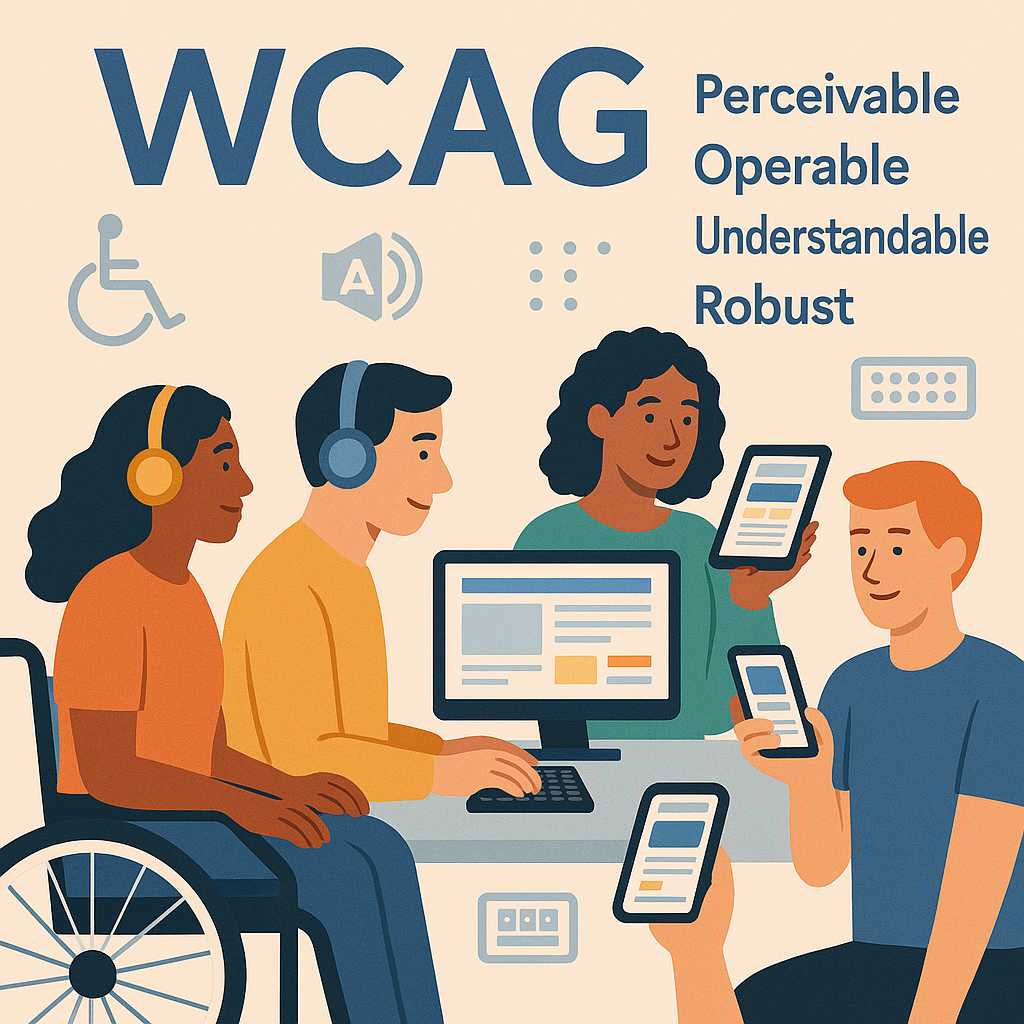The internet is a critical resource in many aspects of life—education, employment, government, commerce, healthcare, and more. To ensure that everyone, including people with disabilities, can access and use web content, the Web Content Accessibility Guidelines (WCAG) were developed. Understanding and implementing these guidelines not only makes your website more inclusive but often improves usability for all users.
What is WCAG?
WCAG stands for Web Content Accessibility Guidelines. Created by the World Wide Web Consortium (W3C), it provides a set of technical standards aimed at making web content more accessible to people with a wide range of disabilities, including visual, auditory, physical, speech, cognitive, language, learning, and neurological disabilities.
WCAG Principles
WCAG is organized around four key principles, often abbreviated as POUR:
-
Perceivable: Information and user interface components must be presented to users in ways they can perceive. For example, providing text alternatives for images so that screen readers can convey the information.
-
Operable: User interface components and navigation must be operable. This includes supporting keyboard navigation for users who can’t use a mouse, and providing enough time for users to read and use content.
-
Understandable: Information and the operation of the user interface must be understandable. This means making text readable and predictable, and helping users avoid and correct mistakes.
-
Robust: Content must be robust enough that it can be reliably interpreted by a wide variety of user agents, including assistive technologies.
WCAG Versions and Levels
The guidelines have evolved, with WCAG 2.1 currently the most widely referenced standard (WCAG 2.2 in draft at the time of writing). Each guideline has three levels of conformance:
- A (Minimum)
- AA (Recommended/Standard for most sites)
- AAA (Highest)
Many organizations, especially those subject to legal requirements, aim for at least AA conformance.
Why is Accessibility Important?
- Legal Compliance: Many countries have legislation that requires web accessibility (e.g., ADA, Section 508, EN 301 549).
- Broadening Audience: Accessible websites reach more users, including people with temporary or situational disabilities.
- Usability: Good accessibility practices often result in better, more usable websites for everyone.
Getting Started with WCAG
- Evaluate Your Site: Use automated tools (like WAVE or axe) and manual checks to identify accessibility issues.
- Prioritize Fixes: Start with the most critical barriers, especially those covered by Level A and AA.
- Ongoing Commitment: Accessibility is an ongoing process—test regularly, train your team, and stay updated with standards.
Conclusion
Committing to WCAG makes the web more inclusive. Start with small steps, learn continuously, and embrace accessibility as an integral part of web content management.


Leave a Reply